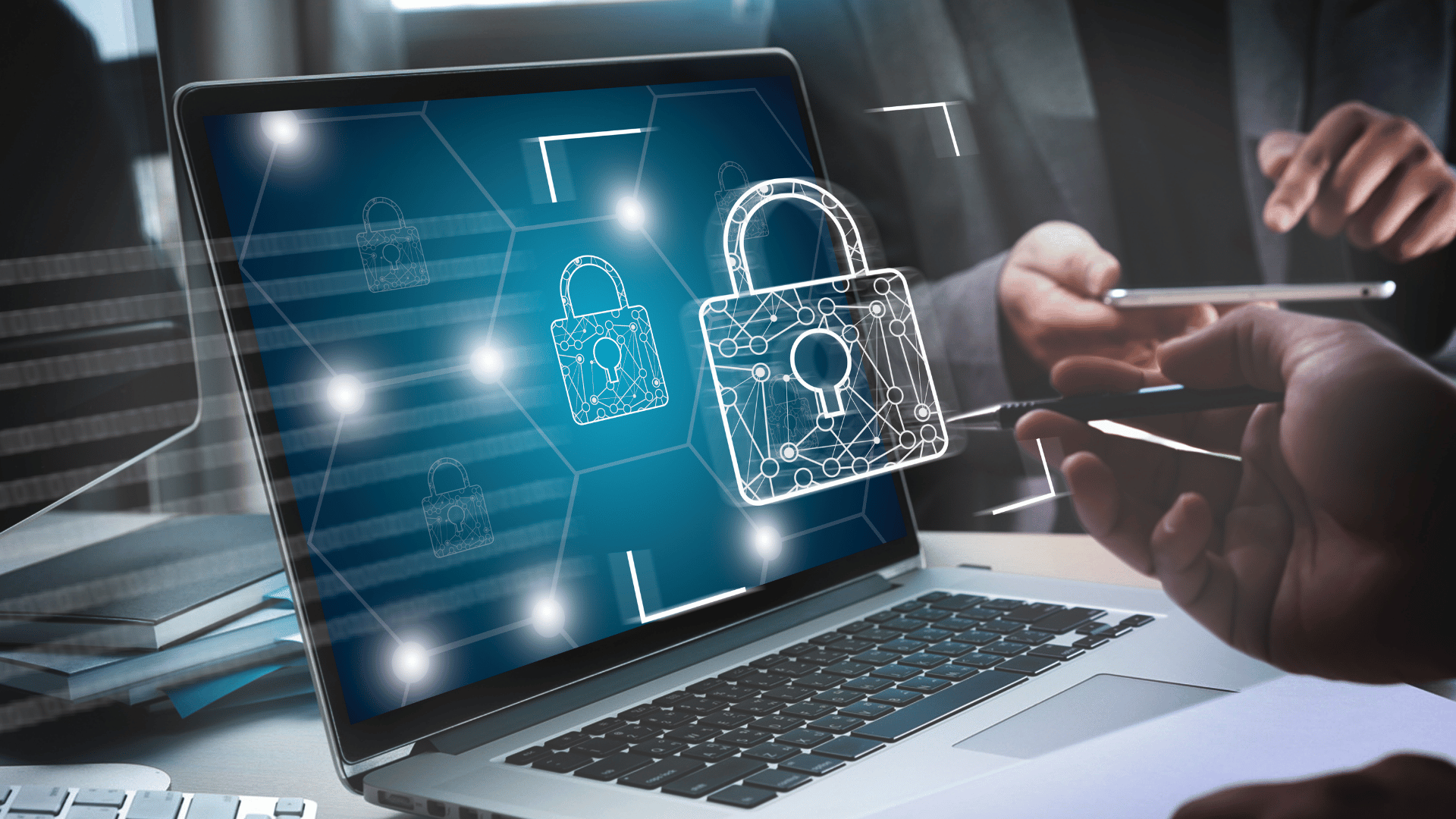Table of Contents
Key Takeaway:
- Implementing strong password policies is crucial for ensuring data security in HRMS. This includes requiring complex passwords, regular password updates, and multi-factor authentication to protect sensitive information.
- Securing on-premise HRMS systems is essential for safeguarding data. This involves setting up physical security measures, such as restricted access to servers and regular backups, to prevent unauthorized access or data loss.
- Data breaches pose a significant threat to HRMS security. It is important to monitor compliance with security policies and implement measures like access controls and encryption to mitigate the risk of data breaches.
In a world where data security and privacy are paramount, understanding their significance in HRMS is crucial. In this introduction, we will delve into the importance of data security in HRMS, ensuring the protection of sensitive employee information. We will also provide an overview of HRMS, shedding light on its role as a comprehensive system for managing human resources. Together, these sub-sections will shed light on the crucial aspects of data security and HRMS in the workplace.
Importance of Data Security in HRMS
Data security is an absolute must-have for any HRMS (Human Resource Management System). With the high reliance on digital platforms for managing employee data, it’s crucial to ensure the protection and confidentiality of this information. The correct implementation of data security measures in an HRMS can stop unapproved access, data breaches, or potential harm to the organisation and its employees.
Efficient data security systems are vital for keeping sensitive info stored within an HRMS. By implementing strong passwords, bodies can make sure that only authorized personnel have access. This includes using complex passwords, enabling multi-factor authentication, and regularly updating passwords.
Also, ensuring information security is important. This involves encrypting data both at rest and in transit, as well as employing firewalls and malware detection tools. Regular monitoring and vulnerability assessments can help identify and reduce potential security threats.
Securing on-premise HRMS systems is another key aspect of data security. Companies need to implement physical safeguards such as restricted access areas and surveillance cameras. Additionally, regular backup procedures should be in place to protect against system failures or disasters.
Knowing different security threats is essential for developing effective mitigation strategies. Data breaches are one of the most common threats faced by HRMS systems. To counter this, organisations must have robust compliance monitoring mechanisms and well-defined security policies in place.
Protecting employee data is essential when it comes to HRMS security. This involves ensuring that personal information such as social security numbers, addresses, and health records are adequately protected from unapproved access or misuse.
In general, maintaining data privacy in an HRMS requires proper management of HR applications and payroll systems. Regular audits should be conducted to identify any potential vulnerabilities or weaknesses in the system’s security measures.
Encryption plays a vital role in HRMS security by protecting confidential data from unauthorized access. Implementing encryption protocols ensures that sensitive information remains private even if it falls into the wrong hands. Upgrading technology infrastructure is also essential for staying ahead of emerging security threats.
Comparing HRMS security features can assist organisations in selecting the most suitable system for their needs. Features such as time and attendance security, strengthened password policies, and an interactive framework contribute to a robust data security environment.
Complying with the General Data Protection Regulation (GDPR) is important when it comes to HRMS systems. Secure data transfer protocols and protection of personal data on devices outside the workplace are necessary to meet GDPR requirements.
In the event of a data breach, having well-defined breach response strategies can help mitigate damages. Organisations should have clear processes in place to minimise the impact on employees and efficiently address any issues that arise.
Employee training on HRMS security is essential for ensuring that individuals understand their role in maintaining data privacy. Regularly educating employees on best practices, risks, and potential security threats helps create a culture of vigilance and increases overall system security.
Auditing HRMS data security regularly can identify vulnerabilities or weaknesses in the system’s infrastructure. Audits play a crucial role in maintaining compliance with regulations and industry standards.
Data anonymization techniques are important for protecting privacy in HRMS systems. By anonymizing employee data, organisations can minimise the risk of re-identification while still gaining valuable insights from the aggregated information.
HRMS Data Security Best Practices
In the realm of HRMS data security, implementing strong password policies, ensuring information security, and securing on-premise HRMS are vital best practices to follow. Let’s explore how these measures can safeguard sensitive employee data, prevent unauthorized access, and maintain the confidentiality and integrity of HRMS systems.
Implementing Strong Password Policies
Organizations must implement strong passwords policies to guard against unauthorized access to sensitive HRMS data. This includes:
- Complex passwords with uppercase, lowercase letters, numbers, and special characters.
- Frequent password updates.
- Multi-factor authentication.
- Account lockout after multiple failed attempts.
- Awareness programs to educate employees on password security best practices.
- Encrypting passwords using cryptographic algorithms.
Enforcing these measures will strengthen data security, guarantee compliance, and keep employee data safe. To stay ahead of threats, review and update policies regularly. It’s like having a secret handshake, but with firewalls and encryption!
Ensuring Information Security
Information security for HRMS is a must! Implement strong passwords and access controls to mitigate threats and breaches. Protect employee data through encryption and tech-upgrades. Ensure privacy maintenance of HR apps and payroll management systems. Regularly update, patch, and scan to prevent unauthorized access. Prioritize payroll security to safeguard sensitive financial info. Consider the long-term costs of data security, like training, audits, and technological advancements.
Encryption can help protect confidential data from misuse. Implement encryption technologies and upgrade them frequently. When comparing HRMS systems, consider their security features. Strengthen password policies for added protection. Create an interactive framework that allows employees to report suspicious activities. Comply with GDPR requirements globally. Secure data transfer protocols to protect employee data in transit. Take measures to protect employee data on personal devices.
Develop breach response strategies, with incident reporting procedures, investigation protocols, and steps to mitigate impact. Provide employee training on HRMS security. Don’t let your HRMS become a horror movie plot! Secure it and keep data safe from lurking threats.
Securing On-Premise HRMS
Securing on-premise HRMS is vital. Organizations should take several steps. Restrict physical access to server rooms or data centers where the HRMS is hosted. This prevents unauthorized individuals from tampering with the system.
Also, implement strict authentication and access controls. For example, multi-factor authentication and limiting user privileges.
Furthermore, organizations must update and patch their HRMS software. This protects against potential cyber-attacks. Additionally, regular backups of HRMS data should be done. This ensures information can be restored if deleted or system malfunction.
Finally, having incident response plans in place is essential. This includes protocols for detecting and responding to security incidents, as well as post-incident analysis and remediation.
HRMS Security Threats & Mitigation
Protecting sensitive employee data is critical in HRMS systems. In this section, we will explore the various security threats faced by HRMS platforms and the measures taken to mitigate them. From understanding the risks of data breaches to ensuring compliance through robust monitoring and security policies, we will delve into the importance of protecting employee data. Stay tuned to discover effective strategies for safeguarding vital information in HRMS systems.
Understanding Data Breaches
Data breaches are a major worry for HRMS. They can lead to unauthorized access of sensitive employee information. Having strong passwords and keeping info secure is essential to reduce breach risks. Plus, securing on-premise systems is vital to avoid physical access.
Knowing the consequences of data breaches is important for successful mitigation. Compliance monitoring and security policy enforcement play a big role in preventing and detecting breaches. Protecting employee data involves access controls, encryption, and secure data transfer protocols.
Organizations should also manage HR applications and keep payroll management systems secure. Consider the long-term costs of data security, such as tech upgrades and training programs.
Encryption tech is key for HRMS security. It makes data unreadable to unauthorized people. Regularly upgrading encryption tech is necessary to keep up with cyber threats and ensure strong data protection.
When looking at HRMS security features, pay attention to time and attendance security measures, strengthen passwords, and create an interactive framework between employees and IT departments.
GDPR compliance is important too. Organizations must make sure secure data transfer happens internally and externally, plus protect data on personal devices used for HR tasks.
In case of a breach, response strategies should include incident reporting protocols, containment measures, forensic investigations, notification procedures, and communication plans.
Employee training is also crucial for HRMS security. Training should cover safe browsing habits, phishing attempts, how to handle sensitive info, and company policies on data protection.
Auditing HRMS data security also helps stay compliant with policies and spot potential vulnerabilities. Regular audits help organizations stay ahead of emerging threats.
Data anonymization is another important part of HRMS data security. By removing PII from datasets, organizations can minimize risk of unauthorized access while still using the data.
Say goodbye to productivity and say hello to HRMS security policies!
Compliance Monitoring and Security Policy
Compliance monitoring and security policy are essential for maintaining data privacy in HRMS. Regular audits aid organizations in assessing compliance with security policies and regulations, and in identifying any potential vulnerabilities. Also, they help guarantee adherence to applicable laws, such as GDPR.
Access controls limit unauthorized access to HRMS data. By enforcing stringent access controls, organizations safeguard sensitive info and stop unauthorized outsiders from accessing it.
Comprehensive security training programs are necessary to educate employees about potential risks and their obligations in keeping data security. Knowing the issues and giving employees the necessary knowledge and skills helps reduce the risk of data breaches.
An incident response plan is needed to resolve swiftly any security breaches or incidents. A well-defined plan makes sure that organizations can take prompt action to take care of any possible threats to data security.
Encryption techniques add an extra layer of security to sensitive employee data. Encrypting the data prevents unauthorized access or theft, preserving its confidentiality and integrity.
Overall, organizations must have a strong security policy and actively monitor compliance with data protection laws. Doing this helps organizations enhance their data protection efforts and reduce the risk of data breaches or unauthorized access to employee information.
Protecting Employee Data
Protecting employee data is essential for HRMS systems. Strong passwords, multi-factor authentication, secure network connections, regular software updates, firewalls, encryption, vulnerability assessments, and penetration testing are must-haves.
Physical security measures such as access controls, surveillance cameras, and secure data storage facilities are essential too. Back-ups are a must, to prevent loss in case of system failure or breach.
Then there’s employee education! Companies must educate their staff about data security and how to handle sensitive info securely. Monitoring systems and security policies help detect any violations and keep employees in check.
These best practices minimize the risk of data breaches and ensure the confidentiality and integrity of employee data. Managing HR applications and ensuring payroll management security is also key – you can’t protect your employees’ data if you can’t pay them on time!
HRMS Data Privacy Maintenance
Data security and privacy in HRMS are crucial aspects to consider in order to protect sensitive information. In this section, we will explore the maintenance of HRMS data privacy and the measures taken to ensure the security of managing HR applications and payroll management.
We will also delve into the long-term costs associated with data security in HRMS. With these insights, organizations can proactively safeguard their data and mitigate potential risks.
Managing HR Applications
Managing HR applications involves handling and maintaining the various software systems used for HR processes. This includes configuring, updating, and troubleshooting HR software for smooth operations and data security.
The latest version of HR management software is a must-have for managing applications. Keeping the software updated gives access to improved features, bug fixes, and security patches. Monitoring and auditing HR apps helps identify vulnerabilities or unauthorized access attempts. Configuring user access levels and permissions within the HR applications makes sure only authorized personnel can view and modify employee data. Backing up HR application data regularly safeguards against data loss or system failures, and helps restore information if needed. Proactively finding and fixing performance issues or glitches in HR applications boosts efficiency and user experience.
Further, managing HR applications involves making sure they’re compatible with other systems within an organization’s IT infrastructure. Integrating HR systems with payroll management or time and attendance tracking systems allows for data flow between departments, improving operational efficiency.
Stay on top of HRMS technology by managing your HR applications. Doing so not only ensures data security, but also streamlines operations, improves employee experiences, and optimizes organizational performance. Leverage innovative technology for better outcomes. Make sure your payroll is secure – it’s just common sense.
Ensuring Payroll Management Security
Payroll management security is vital. Organizations should put measures in place to protect payroll data and only allow authorized personnel access. Secure access controls like two-factor authentication and limited access permissions are a must. Software and systems must be regularly updated with the latest security patches and updates, to stop hackers. Data encryption is super important too, so sensitive info stays unreadable without proper decryption keys, both when stored and in transit.
Organizations should also review and audit their payroll management processes regularly. This helps them spot any security gaps or vulnerabilities and take action. Prioritizing payroll security is the best way to safeguard employee financial info and keep their trust.
Long Term Costs of Data Security
The long-term costs of data security in HRMS can be sizeable. These include investing in robust security features, such as encryption tech, secure transfer protocols, and teaching employees best practices. Plus, organizations may need to allocate resources for regular security audits to make sure their HRMS complies with privacy regulations and standards.
Organizations should invest in a comprehensive HRMS solution that prioritizes data security from the start. This includes strong passwords, firewalls, and intrusion detection systems. They must also understand common data breaches, monitor compliance with security policies, and safeguard sensitive information.
Technology upgrades can help too, by using encryption and staying up-to-date with security features. Comparing HRMS solutions can identify features that enhance security, such as attendance security, password policies, and secure access to employee data.
It’s important to ensure GDPR compliance within an HRMS system. Organizations must prioritize secure data transfers and protect employee data on personal devices or when shared with third-party service providers.
In case of a breach, organizations need defined strategies to reduce damage and notify people as needed. Proactive employee training can minimize risks by creating an awareness culture.
Auditing HRMS data security is a must to identify and fix vulnerabilities or weaknesses. This ensures compliance with privacy regulations and keeps organizations ahead of new threats.
Data security in HRMS is like wrapping it in a digital fortress, with encryption as the impenetrable armor.
Encryption in HRMS Security
Encryption in HRMS Security: Safeguarding confidential data and implementing technology upgrades for enhanced data security, ensuring optimal protection for sensitive information.
Protecting Confidential Data
In today’s digital world, it is vital to secure sensitive info for any company. Safeguarding confidential data is a key part of HRMS data security. As the HRMS system stores and handles a lot of employee data, it is important to make sure that it is kept secure to avoid any unauthorized use.
To successfully protect private data in HRMS, some ideal methods should be put in place:
- Enforce tough password rules: Strong passwords and regular updates can assist in data protection.
- Secure info with encryption: Encrypting sensitive data ensures it remains unreadable and unusable if accessed by the wrong people.
- Maintain solid on-premise safety: Installing firewalls, intrusion detection systems, and other cybersecurity measures helps defend HRMS databases from external threats.
- Instruct staff about data safety: Training employees on how to handle and protect confidential data can reduce the chances of internal breaches.
- Track and audit HRMS activities: Regularly looking at logs and conducting audits can help spot any suspicious activities or possible weaknesses within the system.
By following these best practices, organizations can reduce the risks of any unauthorized access to confidential HRMS data. It is important to remember that protecting confidential data goes beyond just technical measures. Organizational policies and procedures should be set up to create a culture of data security awareness.
Technology Upgrades for Data Security
Organizations must upgrade tech infrastructures to ensure data security. This includes:
- Advancing encryption techniques.
- Deploying multi-factor authentication.
- Adopting cloud-based solutions.
- Registering software updates and patches.
- Installing intrusion detection systems.
- Providing employee training programs.
Plus, they should create strong password policies, secure on-premise HRMS systems, and monitor compliance. Taking a multi-faceted approach to tech upgrades is necessary to protect sensitive information.
The 2017 Equifax data breach serves as an example of the importance of tech upgrades for data security. Despite warnings, Equifax failed to upgrade and apply security patches, leading to the personal info of over 147 million people being compromised.
Comparing HRMS security features is essential for data safety. It helps build an interactive framework to protect your precious information.
HRMS Security Features Comparison
When comparing HRMS security features, it’s important to consider various aspects such as time & attendance security, strengthening password policies, and building an interactive framework. These elements play a vital role in ensuring data security and privacy within HRMS systems. By exploring these sub-sections, we can understand the measures that organizations can take to protect sensitive employee information and maintain a robust security framework.
Time & Attendance Security
To protect HRMS Time & Attendance data, certain security features must be put in place. These are:
| Access Control | Ensuring only authorized personnel can access attendance info with user authentication and authorization. |
|---|---|
| Data Encryption | Utilizing encryption to protect attendance data against interception or unauthorized access. |
| Audit Trails | Keeping logs and audit trails that record any actions related to attendance data, to track any unauthorized attempts or changes. |
It’s important for organizations to regularly review and update their Time & Attendance Security. This includes doing risk assessments, implementing security patches and updates, and staying aware of emerging threats and best security practices.
In short, Time & Attendance Security in HRMS is about measures that maintain the confidentiality, integrity, and availability of employee attendance data. By using strong security features such as access control, encryption, and audit trails, organizations can reduce risks associated with unapproved access or changes to attendance records. It’s essential to consistently review and update security measures to guarantee protection from ever-changing threats.
Strengthening Password Policies
Passwords are an important part of HRMS data security. A strong password policy is essential for safeguarding sensitive information and preventing unauthorized access. Thus, organizations must take stringent measures for creating and managing passwords in order to secure HRMS.
To enhance password complexity, employees should use a combination of alphanumeric characters, symbols, and uppercase/lowercase letters. This makes it harder for hackers to guess or crack passwords.
Regular password updates are also needed in order to reduce the risk of compromised accounts. This prevents unauthorized users from gaining prolonged access to HRMS systems.
Multi-Factor Authentication (MFA) adds an extra layer of security. Users must provide additional authentication factors, such as biometrics or one-time passcodes sent to their registered devices. This significantly reduces the chances of unauthorized access.
Password encryption is also important. Storing passwords in hashed or encrypted formats instead of plaintext increases the security of HRMS systems. In case of a data breach, encrypted passwords are much harder to decipher and use maliciously.
Organizations must evaluate and re-evaluate their password policies regularly, based on emerging security trends and advancements in cybersecurity technologies. This will ensure robust protection against evolving threats. The Verizon 2020 Data Breach Investigations Report found that 81% of hacking-related breaches were due to weak or stolen credentials, demonstrating the importance of strengthening password policies in protecting HRMS data.
Building an Interactive Framework
Integrating an interactive framework into an HRMS system is essential for companies wishing to boost communication, streamline collaboration, increase employee involvement, give real-time data access, and offer a user-friendly interface.
The interactive framework allows effortless communication between different HRMS users, so staff can easily connect with managers and HR representatives. This encourages better communication by allowing quick feedback and resolving queries or worries.
Moreover, the interactive framework promotes collaboration by providing a centralized platform for sharing documents, doing virtual meetings, and working together on projects. This streamlined collaboration increases productivity and effectiveness in the organization.
By adding features like forums or discussion boards, an interactive framework grants workers to take part in organizational conversations and contribute important insights. This creates a feeling of engagement and ownership among the workforce, therefore increasing employee engagement.
A great advantage of an interactive framework is that authorized users can get real-time data access. This means relevant data is quickly available for strategic planning, making faster decisions and allowing HR personnel to stay up-to-date with accurate data.
Constructing an interactive framework involves designing an easy-to-use interface that is simple to navigate and comprehend. This user-friendly interface guarantees that employees can interact effectively with the HRMS system without needing detailed training or technical knowledge.
Overall, the use of an interactive framework eliminates barriers to communication, streamlines collaboration efforts, engages employees in organizational discussions, gives prompt access to appropriate data, and provides a user-friendly interface for efficient interaction with the HRMS system.
Using an interactive framework within an organization’s HRMS system can also facilitate knowledge sharing among employees and foster a culture of collaboration. By allowing ideas to be exchanged freely across departments and levels, the interactive framework supports collaboration and encourages effective communication.
A good example of the advantages of an interactive framework is when a company integrated it into its HRMS system. This implementation enabled employees to quickly submit leave requests, access company policies, and get help from the HR team. The interactive framework also enabled the sharing of crucial updates and announcements, resulting in improved employee engagement and satisfaction.
At last, it is essential for companies to consider securing data transfer and protecting personal devices to make sure GDPR compliance in their HRMS systems. Building an interactive framework with these considerations in mind will help companies remain compliant with GDPR regulations.
GDPR Compliance in HRMS
Ensuring GDPR compliance in HRMS is crucial for data security and privacy. In this section, we will explore two key aspects: secure data transfer and protecting data on personal devices. Discover how organizations can safeguard sensitive data during its transmission and ensure its safety when accessed via personal devices. Stay informed about the best practices and measures to meet GDPR requirements within HRMS systems.
Secure Data Transfer
To keep HRMS data secure while in transit, there are certain measures to take. Encrypting data adds an extra layer of security. Utilizing secure protocols such as HTTPS or VPNs helps create a protected connection. It is also essential to regularly update software and security patches. Auditing and monitoring enable prompt detection of any abnormal or suspicious activities.
These measures help maintain the confidentiality, integrity, and availability of critical employee information. However, other aspects of HRMS security must be taken into consideration, like malware infections, insider threats, or physical breaches. To prevent a hacker’s horror story, keep your personal data safe on your devices.
Protecting Data on Personal Devices
Ensuring the security and privacy of HRMS systems is key. As personal devices are now used for work, it’s vital to put measures in place to shield sensitive information from potential breaches or unauthorized access. Here are some of the steps to take:
- Encrypt personal devices – so data is safe even if the device is lost or stolen.
- Require strong passwords – to keep HRMS data from being accessed without permission.
- Enable remote wipe capabilities – so HRMS data is erased if the device is lost or stolen.
- Update security software – to protect against malware and other threats.
- Train employees – so they know the importance of protecting data and how to handle it safely.
Plus, having clear policies on acceptable use and guidelines for reporting lost/stolen devices is necessary. This way, organizations can significantly reduce the risk of data breaches and keep HRMS data secure.
HRMS Breach Response Strategies
HRMS breach response strategies are a must for data security and privacy in an organization. Preparing beforehand helps mitigate risks and lessen the impact of incidents. Encryption and access controls can protect stored employee data. Regular monitoring, incident detection, and response protocols should be set up to spot breaches.
Prioritizing incident response planning and having clear communication lines is key. Setting up a response team with roles and responsibilities helps the process. Investigating, assessing the breach, identifying affected individuals, and taking action to stop further damage is important.
Notifying relevant authorities and affected individuals is required by data protection regulations. Providing info on the breach keeps trust with employees and stakeholders. Measures need to be taken to fix the breach, like enhancing security or updating HRMS systems.
When responding to HRMS breaches, the urgency of securing data needs to be weighed against the sensitivity of employee information. Considering potential effects on employee morale and job satisfaction while protecting their data is a must.
A large multinational company experienced a data breach. Hackers got into their HRMS system, compromising employee information. The company acted fast using their breach response plan. They investigated, notified affected individuals, and gave credit monitoring services. This highlighted the importance of robust response strategies and the consequences of inadequate security measures.
Employee Training for HRMS Security
Employee training on HRMS security is a must – for protecting sensitive data and keeping employee privacy safe. Orgs need to give comprehensive training to all employees who use HRMS systems. Follow this 4-step guide!
1. Awareness: Begin by raising awareness. Explain the risks of data breaches and their impact on the org and individuals. Also, stress the need for confidentiality and how everyone can help keep info secure.
2. Security protocols: Provide guidelines and protocols for accessing and handling HRMS systems. Eg. Creating strong passwords, updating them, using multi-factor authentication, logging off when not in use, securely storing physical documents.
3. Data protection: Train employees on security measures to protect HRMS data. Eg. Encrypting sensitive info, regular system backups, restricted access. Also, explain the consequences of unauthorized data access or sharing.
4. Ongoing training: Keep employees updated about the latest security threats and preventive measures. Eg. Newsletters, workshops, online training modules. Encourage employees to report suspicious activities or breaches.
Remember, employee training isn’t a one-time event. It needs to be an ongoing process. Regular reminders, assessments, refresher training sessions can help reinforce data security and privacy.
Organizations can also take additional steps to enhance HRMS security. Eg. Implementing role-based access controls, conducting regular security audits, and staying updated with the latest security patches and software updates. This way, you can create a secure environment for HRMS data.
Auditing HRMS Data Security
Data security and privacy in HRMS are essential. Therefore, auditing is crucial to protect sensitive information. This involves assessing security measures to identify potential gaps which could lead to unauthorized access or breaches. Evaluating access controls, encryption methods, backup and recovery procedures, and monitoring mechanisms helps ensure compliance with privacy regulations and industry best practices.
Create a table with columns such as Access Controls, Encryption Methods, Backup and Recovery, and Monitoring Mechanisms. Access Controls outline policies and procedures to restrict access to HRMS data based on user roles and permissions. Encryption Methods describe encryption techniques used to protect data during transmission and storage. Backup and Recovery detail processes to regularly back up HRMS data and recover it in the event of a system failure. Monitoring Mechanisms highlight tools and processes used to monitor and detect any unauthorized access or unusual activity.
When auditing HRMS data security, consider user authentication and authorization processes, security audits and assessments, and incident response plans. User authentication and authorization processes ensure only authorized individuals can access and modify HRMS data. Security audits and assessments help identify potential vulnerabilities. Incident response plans outline steps to be followed in the event of a data breach or security incident.
Auditing HRMS data security proactively assesses security posture and identifies areas for improvement. This helps protect sensitive HRMS data, maintain compliance with privacy regulations, and enhance overall data security.
Data Anonymization in HRMS
Data anonymization is essential in HRMS (Human Resource Management Systems). It removes personally identifiable information like names, addresses, and Social Security numbers. This technique keeps sensitive employee info safe and lets organizations analyze and use the data.
Data anonymization in HRMS provides security against unauthorized access and data breaches. It follows data protection regulations like GDPR and HIPAA. It also lets HR departments research and analyze within HRMS, without compromising individual privacy.
Anonymizing data offers unique advantages too. Organizations can gather insights and identify patterns without exposing sensitive info. This helps HR professionals make decisions, plan workforce, and boost employee performance. Anonymized data also makes benchmarking and comparisons easy, so organizations can assess their HR practices and align them with industry standards.
A multinational corp with a large workforce used anonymization to survey employee satisfaction levels. The HR team could conduct detailed analyses without compromising individual privacy. This ensured the confidentiality of personal info and let the organization find areas of improvement. It also enabled them to implement initiatives to enhance employee satisfaction & engagement.
Data anonymization in HRMS is crucial for protecting personal information and utilizing workforce data. It follows data protection regulations, maintains individual privacy, and enables valuable data analysis.
Conclusion
Data security and privacy are vital when it comes to HRMS (Human Resource Management Systems). HR departments must protect sensitive employee info and stick to data protection regulations. Robust security measures, such as encryption, access control, and regular backups, are essential for safeguarding data.
Organizations must create employee data privacy policies and provide training to staff involved with HRMS data. This will help stop data breaches and unauthorized access.
Regular audits and vulnerability assessments should be done. This helps organizations address security flaws and improve data protection.
Organizations should work with reputable HRMS vendors with a good track record in data security and privacy. These vendors should give regular software updates to address any vulnerabilities and meet industry standards.
Data security and privacy are super important with HRMS. Implement robust security measures, develop comprehensive policies, and work with trusted vendors to keep employee info secure.
Some Facts About Data Security and Privacy in HRMS
✅ Storing sensitive employee data on HRMS software makes it a target for cybercriminals and can have legal implications if accessed without authorization.
✅ Measures to address data privacy and security concerns in HRMS software include implementing strong password policies, using secure channels for data transfer, and limiting access to sensitive data.
✅ Regular monitoring and updating of HRMS software helps identify vulnerabilities and address them before they can be exploited.
✅ An HRMS system automates HR functions such as recruitment, payroll management, talent management, and analytics.
✅ Data security practices in HRMS include data encryption, access control based on roles, and compliance with GDPR regulations.
FAQs
Ques 1. How does data security and privacy in HRMS protect sensitive employee information?
Ans 1. Data security and privacy measures in HRMS, such as strong password policies, encrypted data transfer, and limited access controls, help safeguard sensitive employee information from cybercriminals and unauthorized access. These measures ensure the protection of personal data and mitigate legal implications.
Ques 2. How does working from home impact data security in HRMS?
Ans 2. With many employees working from home on their own devices, the risk of data breaches and threats to HRMS data security increases. Organizations need to implement strict security protocols, such as secure remote access and employee training on information security responsibilities, to ensure the protection of HR data in the current business environment.
Ques 3. What are the consequences of data breaches in HRMS?
Ans 3. Data breaches in HRMS can have severe consequences, including reputational damage, financial loss, and legal implications. Personally identifiable information (PII) and financial records stored within HRMS make it a prime target for hackers. By prioritizing data security, businesses can avoid these consequences and maintain the integrity of their organizational data.
Ques 4. How does HRMS data security contribute to compliance with regulations?
Ans 4. HRMS data security measures, such as encryption, controlled access, and data checks, help organizations comply with regulations like the GDPR (General Data Protection Regulation). These specialized security features ensure that personal information is protected, eliminating the risks of non-compliance and associated penalties.
Ques 5. How does HRMS archiving enhance data security in organizations?
Ans 5. HRMS archiving provides an opportunity to strengthen data security capabilities. By following architectural and process guidelines, organizations can encrypt data during transit and storage, implement centralized authentication and authorization protocols, and adopt a defense-in-depth approach. These measures enhance HRMS data security and protect against data threats.
Ques 6. What is the role of employee/vendor training in HRMS data security?
Ans 6. Employee/vendor training plays a crucial role in ensuring HRMS data security. By providing explicit awareness of security policies and guidelines, organizations can educate employees and contractors about their information security responsibilities. This training minimizes the risk of data breaches caused by human errors and ensures that all individuals involved understand and comply with data security protocols.






















Leave feedback about this